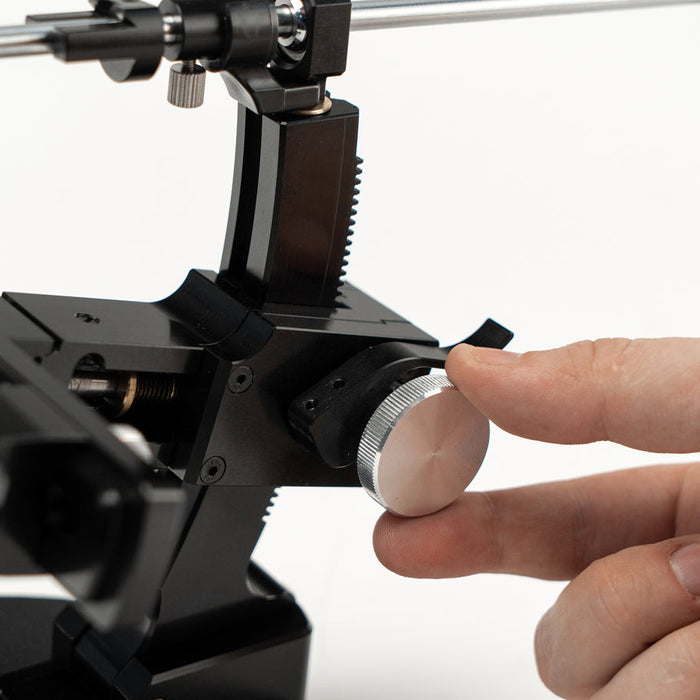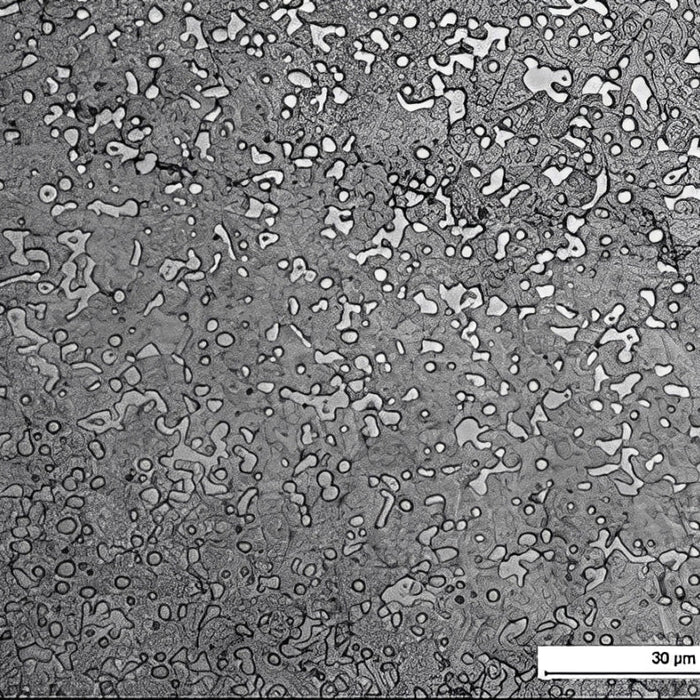The most popular types of pocket knife blades
If you open the catalog of leading pocket knife retailers and flip through the technical specifications of the most popular ones, you can come to very simple, generalized conclusions.
Specifications of the most popular blades:
-
Cutting edge/blade length: from 50 – 90 mm
- Blade width: 10 - 25 mm
- Blade thickness: from 2.0 – 3.3 mm, rarely up to 4 mm
- Bevel shape: straight, hollow, or rarely combined
- Type of cutting edge/bevels: straight or combined with serrations
- Tip types: drop point, clip point, spear point, tanto, hawkbill, trailing point
At first glance, everything seems simple; however, if you start combining the listed characteristics, you can confidently say that among these knives, a whole range of items will emerge that are not always easy to sharpen without appropriate equipment and sufficient experience.
An ideal option for "simpler" sharpening, that is, anywhere and on anything, would be a pocket knife with a blade having straight or hollow bevels, spine thickness about 2.5 – 3 mm, blade width about 25 mm, blade length about 75 mm, with standard straight bevels, and possibly a small belly and drop point tip. It would be very boring if all manufacturers made everything identically because every knife enthusiast wants something special.
Specifics of sharpening pocket knife blades and choosing a corresponding sharpener
Based on the summarized information above, it becomes understandable that due to very different technical characteristics of blades and handles, intended purposes of knives, and their application areas, it is practically impossible to recommend a single universal way of sharpening pocket knife blades.
We conducted an analysis and identified several problems one might encounter when sharpening pocket knives. Below, the reader can familiarize themselves with an approximate list:
Case 1. Narrow and thin
Without experience, it is difficult to sharpen such a blade without spoiling the factory angle, and even if you use a special device will not be much help.
Case 1. Narrow and thin blade
There are quite a few folding knives with narrow and thin blades in everyday use, which are difficult to sharpen manually as well as on special devices. The sharpening difficulty consists of very thin bevels and the need to precisely control the sharpening angle to avoid spoiling the blade.
When sharpening manually, it is difficult to maintain the angle. Sharpening a thin and narrow blade on a device requires clamps that allow sharpening at the factory angle. If sharpening on a special sharpener, the correct abrasive and low revolutions are needed.
The TSPROF Blitz Pro sharpener may be particularly suitable as it has clamps ideally suited for sharpening such blades.
Case 2. Wide and thick
The difficulty lies in mounting or fixing at the correct angle, and besides, sharpening might involve significant material removal and special abrasives.
Case 2. Large and wide blade
In addition to spine thickness, bevel shape is also important. With significant thickness and bevels from the spine, installation and control of the sharpening angle can be especially complicated. Here again, a sharpener with a magnetic work table or additional accessory performing the same role can help.
And sometimes the difficulty simply lies in the fact that on certain sharpeners, a blade with a sufficiently thick spine simply cannot be fixed, as the clamps have thickness limitations.
In case the knife blade is sufficiently wide and has a non-standard spine thickness, it is most likely a powerful pocket knife, which may require using special highly efficient abrasives for sharpening that cannot be used with all sharpeners due to their shapes and sizes. An example would be diamond abrasives 200 mm long and 30 mm wide.
Case 3. Non-standard shape and/or complex grind of the blade and significant bevel differences
Non-standard spine lines or combined bevels quite often determine bevel angles. Under such conditions, changing the sharpening angle when transitioning from segment to segment of the blade forces changing sharpening equipment settings. The more such transitions, the harder it is to maintain one precise angle measure and avoid mistakes.
Case 3. Non-standard combined bevel grind
Sharpening such a blade manually with precision is nearly impossible and requires special equipment capable of changing sharpening modes and at the same time precisely repeating identical sharpening angles on both sides of the blade to form the correct cutting edge.
Such adjustments are possible on almost all semi-professional and professional devices. Sharpeners of this class include home sharpeners from TSPROF and several other manufacturers. In addition, such sharpening can be performed on more complex professional equipment with electric drives, such as special sharpeners and grinders.
Case 4. Some knives have one or more blades
Sometimes folding knives are equipped with several blades of different sizes, which may require sharpening. If the larger blade is easy to sharpen, then the smaller or complex grind blade may remain unsharpened.
Case 4. Knife with different blades
In this specific case, we have a combination of several problems—one blade can be standard and sharpened without particular problems. The remaining complex blades or significantly smaller blades will be more difficult to sharpen.
A solution may be a sharpener that has additional accessories for more universal tasks. These are special accessories in the form of an additional work table or magnetic platform, on which complex blades can be clamped and sharpened. Sharpeners in this segment are provided by TSPROF and other manufacturers.
Case 5. Lack of a flat and accessible area near the blade heel and the need to disassemble the knife
This circumstance significantly complicates the sharpening process. If disassembly is unavoidable, you must be sure that you can reassemble everything properly.
Case 5. Blade with a small plane section
This is a very common sharpening problem for most sharpeners. The absence of a straight flat segment simply will not allow fixing the knife blade, and one option is manual sharpening or disassembling the knife handle.
From this circumstance, a related problem naturally arises in the next case.
Case 6. Difficulty in clamping with sharpeners due to the bevel shape
There may be cases where the blade simply cannot be stably fixed, and this is a significant problem. Such a problem often occurs when sharpening blades with bevels from the spine. This bevel shape is quite common on narrower blades to make the bevel thinner and with a sharper angle.
If your sharpener has special clamps that allow clamping complex spine types and bevels and allow control of the required angle, and they can be combined, then disassembling the knife is not necessary at all. Again, not every sharpener has such special clamps.
Such clamp types are available from TSPROF. These are so-called spring single and double clamps. They have a screw system that allows the clamp jaws to bend to fit tightly against knife bevels with full flat grind sharpening and other similar grinds.
Case 7. Blade thickness simply does not allow sharpening on a household electric sharpener
This is a fairly common problem when a blade with significant spine thickness may not fit into the slot of an electric sharpener, requiring manual sharpening.
Blade thickness and handle shapes, along with blade width and thickness, prevent full bevel sharpening on certain sharpeners. This also applies to a range of pocket knives that are not intended to be sharpened on household electric sharpeners of a certain configuration.
The solution would be sharpening with special equipment or turning to a professional sharpener.
Case 8. The thumb stud interferes with sharpening the entire bevel length
This problem often occurs when trying to sharpen a knife on most types of sharpeners, ranging from pull-through and household electric sharpeners to guided sharpeners. Here, sharpening is often performed from the heel to the tip.
The presence of a thumb stud or a non-removable disc for opening the blade can be problematic both for electric and professional sharpening machines, as the abrasive hits the thumb stud. The thumb stud prevents sharpening the bevel closer to the blade heel, at least if you want to maintain a single angle.
Because of this, a specialized solution in the form of a sharpener with special accessories has to be found. TSPROF sharpeners allow placing the knife further from the sharpener center at the required angle to the guide, which allows sharpening the entire length of the cutting edge.
PHOTO. KNIFE WITH THUMB STUD OFFSET FROM TSPROF SHARPENER CENTER
Case 9. Short blade length simply does not allow sharpening with conventional means
This somewhat relates to the problem of household electric sharpeners and can also become a problem for professional equipment, and is quite similar to "Case 4."
This is easily solved by using longer clamps or clamps with a reduced thickness design, which allows sharpening narrow knives of short length.
PHOTO. SMALL KNIFE CLAMPED IN TSPROF SHARPENER CLAMPS
Case 10. Blade shape and bevel grind type factors that complicate pocket knife sharpening
With combined blade parameters, there may be difficulties with fixation and sharpening angle control methods, or you may need to combine sharpening methods and reconfigure the system for sharpening blades with special grinds.
If you need to sharpen a combo blade with straight and serrated bevels, it is impossible to use one abrasive format. Additionally, ideally, you need to select a different sharpening angle for each separate serration segment and repeat the same angle on a similar segment. Not every sharpener guarantees such complex, correct, and high-quality sharpening.
In any case, a specialized solution is required here.
How pocket knives become dull
Speaking about methods of dulling a pocket knife, we are not talking about barbaric, intentional dulling of the knife bevel against a brick.
Factors include location and specific conditions, multiplied by frequency and intensity of use.
When carrying a simple EDC-style pocket knife with fairly simple steel and relatively daily use without significant loads, the knife can last on one sharpening from six months to a year, and with careful use, even longer. The main condition is using the knife with a specific blade construction for its intended purpose, and everything will be fine. You can always sharpen the blade at home or give the knife to a sharpening master. Here, conventional means or, more accurately, for constant, stationary use, will be precisely suitable.
If the folding knife is used outdoors or as a hunting knife due to circumstances or by preference, you simply need to have a portable device. Many apex format sharpeners are suitable for these purposes.
The market has enough solutions that fit in a small box, backpack, or special case and are sufficiently compact for transportation outdoors.
There are also very small pocket sharpeners with two or three abrasive surfaces, which can quickly restore blade sharpness.



















